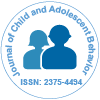Наша группа организует более 3000 глобальных конференций Ежегодные мероприятия в США, Европе и США. Азия при поддержке еще 1000 научных обществ и публикует более 700 Открытого доступа Журналы, в которых представлены более 50 000 выдающихся деятелей, авторитетных учёных, входящих в редколлегии.
Журналы открытого доступа набирают больше читателей и цитируемости
700 журналов и 15 000 000 читателей Каждый журнал получает более 25 000 читателей
Индексировано в
- Индекс Коперника
- Google Scholar
- Открыть J-ворота
- Академические ключи
- БезопасностьЛит
- РефСик
- Университет Хамдарда
- ЭБСКО, Аризона
- OCLC- WorldCat
- Публикации
- Женевский фонд медицинского образования и исследований
- Евро Паб
- ICMJE
Полезные ссылки
Журналы открытого доступа
Поделиться этой страницей
Абстрактный
A Brief Note on Psychosis in the Children
James Walker
Despite the fact that the Diagnostic and Statistical Manual of Mental Disorders, Fourth Edition, Text Revision (DSM-IV-TR) provides identical symptoms and definitions for children, adolescents, and adults, the diagnosis of childhood psychosis raises a number of unresolved issues. When distinguishing between childhood-onset schizophrenia (COS) (12 years), bipolar affective disorder, major depressive disorder, and even obsessivecompulsive disorder and attention-deficit/hyperactivity disorder), fantasy lives of children, as well as issues with developing language and cognition (including retardation), all impair diagnostic accuracy: For problems that cannot be solved, the all-encompassing classification known as psychosis not otherwise specified (PNOS) is always available. Neurocognitive issues are typical if nonpathognomonic features. There are a variety of screening tools and specialized versions of semistructured diagnostic interviews. Although smooth-pursuit eye-tracking movements may serve as a genetic marker for COS, the etiologies are more likely to be oligogenetic than to be associated with a single gene. Neuroimages and specific biological markers have not been identified. As a result, psychoses might be a sign of a larger pattern of brain dysfunction. Due to a lack of controlled data for children under the age of 18, drug treatments are largely based on adult literature. Psychosocial treatments and psychotherapy for childhood psychosis still lack rigorous research.
Журналы по темам
- Биохимия
- Ветеринары
- Генетика и молекулярная биология
- Геология и науки о Земле
- Еда и питание
- Иммунология и микробиология
- Инженерное дело
- Клинические науки
- Материаловедение
- медицинские науки
- Науки об окружающей среде
- Общая наука
- Сельское хозяйство и аквакультура
- Социальные и политические науки
- Уход и здравоохранение
- Фармацевтические науки
- Физика
- Химия

 English
English  Spanish
Spanish  Chinese
Chinese  German
German  French
French  Japanese
Japanese  Portuguese
Portuguese  Hindi
Hindi